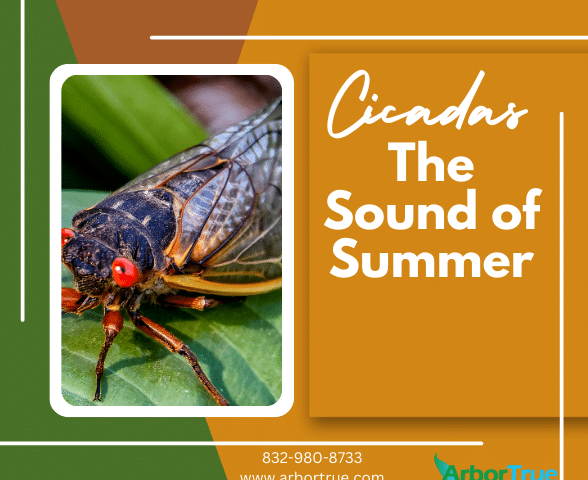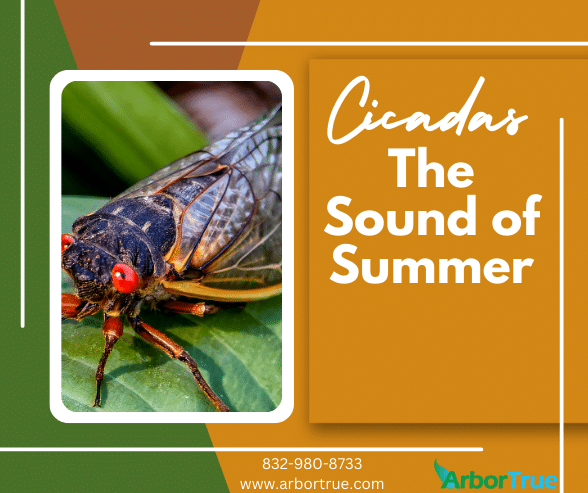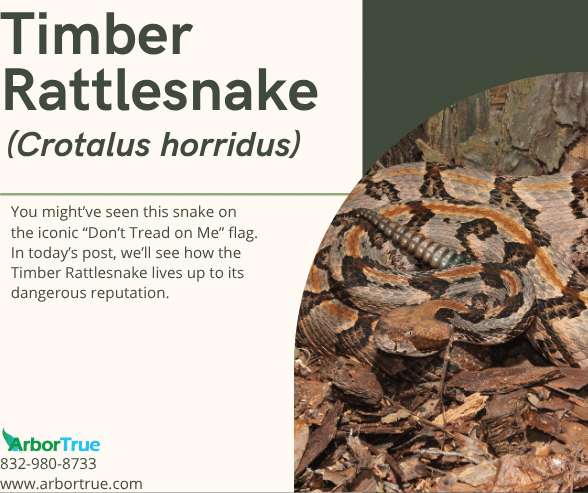
What Makes Those Holes In The Ground Around My Trees?
August 28, 2024
Mushroom Monday: Webcap Mushrooms (Cortinarius multiformis)
September 2, 2024
Cicadas: The Sound of Summer
In a recent post, we explained the cause of those mysterious holes you might have seen in the ground around your trees. They may have been caused by cicadas. In today’s post, we take a look at these interesting little insects that make the sound of summer.
What are Cicadas?
Cicadas are insects. Sometimes people mistakenly call them locusts, but they are different. Locusts are a kind of grasshopper.
What Do Cicadas Look Like?
There are thousands of species of cicadas and their appearances vary. Generally, adult cicadas are large in size. Their bodies are short and their eyes are set wide apart. They can range in size from around eight tenths of an inch to two inches. The body colors of cicadas can vary depending on species but generally they can be brown or green with black marks. They have clear wings (two sets) and short antennae. Their bodies have three main parts: the head, the thorax, and the abdomen. They have a pair of antennae. They have both compound and simple eyes, and their compound eyes bulge out. Annual cicadas can look different than periodical ones, and generally have duller colors.
Female and male cicadas differ in appearance. The abdomen of females is pointed and they have an egg laying organ covered in a sheath.
The eggs of cicadas look like small grains of rice. The newly hatched nymphs look like termites, and as they go through stages (instars), they resemble beetles. The nymphs are wingless.
Where Do Cicadas Spend Their Lives?
Cicadas start out as eggs laid on tree branches. When the eggs hatch the nymphs stay on the branch until they fall to the ground. Once on the ground, they burrow into the soil and stay there for between two and seventeen years, depending on the species. At some point they emerge, climb trees, molt into adults, and the cycle starts again.
What Different Cycles Do Cicadas Have?
Cicadas can have one of three cycles.
Some cicadas are annual. Annual cicadas appear each year, although they can stay underground for between two and five years. Their cycles aren’t synchronized, which is why some can appear each year even though they are underground for longer than that.
Other cicadas are periodical. These are the ones you may have heard about that have 13 or 17 year cycles. There may be ones that have longer cycles, but in the U.S., periodical cicadas emerge either every thirteen years or every seventeen years.
Lastly, there are protoperiodical cicadas. These cicadas can come out on a yearly basis, but also can come out after a number of years as a group. It depends on the conditions.
Why Do Periodical Cicadas Emerge at the Same Time?
Periodical cicadas emerge in groups because it maximizes the chances that some will live to breed and lay eggs. It’s a survival strategy. Cicadas don’t have many defenses from predators, so coming out in large numbers can help ensure that at least some survive.
In the U.S., periodical cicadas have periods of 13 and 17 years. Groups that emerge in the same year are referred to as broods. There are a number of broods in the U.S., and millions of cicadas can emerge at the same time. How long periodical cicadas spend underground depends on their species. At the moment, there are nine known cicada species that are periodical.
Where Does the Noise Come From?
Cicadas make a distinct humming sound that many may associate with summer. This noise is made by male cicadas. Male cicadas have a special part called a tymbal (though not all species do). They click it to make a noise. They click their tymbals so quickly, it makes the humming sound that we hear. It can be as loud as lawn equipment.
Male cicadas make this noise either because they are in groups, because they are trying to attract a mate (the main reason), or because they are disturbed. Female cicadas also make a noise by flapping their wings, but it is not the same sound.
The noise the males make helps them to find mates and it helps them to reproduce in a relatively short amount of time.
What Do Cicadas Eat?
Cicadas don’t have mouths that bite like some other insects. Instead, cicadas have a straw-like mouth that they use to suck sap from stems and twigs when above ground, and roots when below ground. This is their only source of food. Cicadas don’t suck sap from leaves, nor do they eat leaves. Cicadas are different from some other kinds of insects in that both the nymphs and the adults consume fluid from plants using a special mouth part.
What Do Cicadas Do Underground?
While underground, cicadas tunnel and drink sap from tree and other plant roots. Cicadas can mark the passage of time by the change in sap from plants. Male cicadas are signaled to emerge when the temperature of the soil gets above sixty four degrees in the year they are supposed to emerge, depending on their cycle. This generally occurs during the summer.
While underground, cicadas go through four development stages called instars. Their final stage is completed while above ground.
What Do Cicadas Do While Above Ground?
When cicadas tunnel out of the ground, they leave a hole with the diameter of a dime (in some cases, these holes can help to aerate a lawn). They find a tree, climb up, and shed their skin (which can sometimes be found on trees). At this point, their wings develop and they are adults. They then fly away, feed on sap, find a mate to reproduce, and then die. This whole process occurs quickly, lasting six weeks or less. Many cicadas are consumed by a variety of predators during this time. Generally, cicadas spend most of their life beneath the earth.
Female cicadas lay their eggs in groups of between twenty to thirty toward the end of branches on many types of trees. They make a groove in twigs that they lay their eggs in. The eggs hatch in about forty days and they consume sap from the groove where they were laid. Eventually, they either fall to the ground or the twig they are on falls and they end up at the soil. At this point, they burrow underground and the cycle starts over again.
The ends of branches can die after the female lays her eggs and the nymphs hatch and begin to feed. The dying of the branch ends is referred to as flagging. It generally is not a major issue.
Where Can Cicadas Be Found?
Cicadas can be found in a variety of environments that are temperate or tropical. They can be seen around hardwoods, including a variety of different species.
If you liked learning about cicadas, check out the other posts on our TrueTreeTalk blog. Follow us on Facebook to keep up with these and other posts.
* * *
ArborTrue is a science-based tree-service company in the greater Houston area. We also serve Austin and other parts of Central Texas. We provide a range of services including tree trimming, tree pruning, tree removal, tree planting, arborist consultations, and more. Call us today at 832-980-8733 (Houston) or at 512-546-3833 (Austin) or reach out to us online to schedule an appointment.




